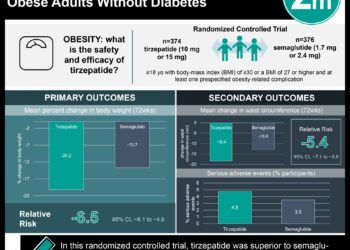2 Minute Medicine Rewind May 26 – June 02, 2014
Use of Vibrio cholerae Vaccine in an Outbreak in Guinea
Recent cholera outbreaks have motivated the development of new methods for containment. The Shanchol oral cholera vaccine is a cheap and easy-to-store solution that is being considered for mass vaccination campaigns; however its effectiveness in offering short-term protection has not been rigorously studied. This case control study involved 40 cholera cases and 160 matched healthy controls after a mass cholera vaccination campaign with Shanchol in Guinea. Investigators found that vaccination with two complete doses of Shanchol was associated with significant protection against cholera (86.6% effectiveness, 95% CI 56.7-95.8, p=0.001). The effectiveness of an incomplete course of the vaccine could not be conclusively assessed. This study demonstrates that Shanchol is an effective oral cholera vaccine that may be used for outbreak prevention and control.
Vitamin C Supplementation for Pregnant Smoking Women and Pulmonary Function in Their Newborn Infants
Previously in primate models, vitamin C was shown to block some of the adverse in-utero effects of nicotine on fetal lung development. Investigators sought to understand whether vitamin C supplementation could similarly decrease the adverse effects of maternal smoking on offspring pulmonary function and asthma risk. In this randomized control trial, 159 newborns of pregnant smokers were randomized to Vitamin C supplementation or placebo. This study found that newborns at one year had significantly improved pulmonary function in the intervention group compared to the control group as measured by TPTEF:TE (Time to Peak Tidal Expiratory Flow: Expiratory Time) (0.383 vs. 0.345, 95% CI for difference 0.011-0.062, p=.006) and compliance per kilogram [Crs/kg] (1.32 vs 1.20 mL/cm H2O/kg, 95% CI 0.02-0.20, p=.01). Newborns in the intervention group also had significantly decreased rates of wheezing through 1 year (21% vs. 40%, RR 0.56, 95% CI 0.33-0.95, p=0.03). This demonstrates that vitamin C supplementation may be a simple and cheap method for mitigating the adverse effects of smoking during pregnancy.
It is common belief that hypertension is strongly associated with occurrences of all cardiovascular diseases across many ages and that the effects of elevated diastolic and systolic pressures are concordant. However, this has not been definitely shown to be true in a contemporary population. This study sought to clarify the associations of blood pressure with 12 different presentations of cardiovascular disease utilizing electronic health records data from 1997 to 2010 from a cohort of 1.25 million patients, 83,098 of whom had cardiovascular disease presentations during a median of 5.2 years of follow-up. Investigators found that high systolic pressure was most strongly associated with intracerebral hemorrhage (HR 1.44, 95% CI 1.32-1.58), subarachnoid hemorrhage (1.43, 1·25-1.63), and stable angina (1.41, 1.36-1.46), but was most weakly associated with abdominal aortic aneurysm (1.08, 1.00-1.17). When comparing systolic and diastolic pressure, high systolic pressures had a much greater effect on angina, myocardial infarction, and peripheral arterial disease, while high diastolic pressures had a larger effect on abdominal aortic aneurysm. Overall, patients with hypertension had a lifetime risk of cardiovascular disease of 63.3% (95% CI 62.9-63.8) compared with 46.1% (45.5-46.8) for patients with normal blood pressure, and developed cardiovascular disease 5.0 years earlier (95% CI 4.8-5.2). This study shows that while the overall assumption that hypertension increases risks of cardiovascular disease is correct, raised systolic and diastolic blood pressures appear to have different affects on patients at different ages.
Obesity is a known worldwide problem; however, there is yet to be a formal global assessment of the extent of the epidemic. In this Global Burden of Disease Study, investigators pooled data from 1769 surveys, reports, and published studies to create an estimate of the trends in obesity prevalence in children and adults from 1980 to 2013. This study found that from 1980 to 2013, the global proportion of adults with a BMI of 25 kg/m2 or greater increased from 28.8% (95% CI 28.4-29.3) to 36.9% (36.3-37.4) for men and from 29.8% (29.3-30.2) to 38.0% (37.5-38.5) for women. 23.8% (22.9-24.7) of boys and 22.6% (21.7-23.6) of girls were overweight or obese in 2013 with significant increases in developing countries, from 8.1% (7.7-8.6) to 12.9% (12.3-13.5) in 2013 for boys and from 8.4% (8.1-8.8) to 13.4% (13.0-13.9) in girls. These trends show that obesity indeed has become a growing global health challenge.
Deficiencies in vitamin D are associated with adverse outcomes in asthma and other diseases. Investigators sought to assess whether supplementing inhaled corticosteroids with oral vitamin D3 in asthmatics would result in improved clinical outcomes. In this randomized control trial, 408 patients with symptomatic asthma and serum 25-hydroxyvitamin D levels less than 30 ng/mL were randomized to oral vitamin D3 supplementation or placebo in addition to their inhaled ciclesonide treatment. The study found that the intervention group compared to the control group did not have any significant difference in the rate of asthma treatment failure during the 28 weeks of study (28%, 95% CI 21%-34% vs. 29%, 95% CI 23%-25%, adjusted HR 0.9, 95% CI 0.6-1.3). These results do not support the use of vitamin D3 supplementation for improving asthma outcomes in vitamin D deficient asthmatics.
Image: PD
©2012-2014 2minutemedicine.com. All rights reserved. No works may be reproduced without written consent from 2minutemedicine.com. Disclaimer: We present factual information directly from peer reviewed medical journals. No post should be construed as medical advice and is not intended as such by the authors or by 2minutemedicine.com. PLEASE SEE A HEALTHCARE PROVIDER IN YOUR AREA IF YOU SEEK MEDICAL ADVICE OF ANY SORT. Content is produced in accordance with fair use copyrights solely and strictly for the purpose of teaching, news and criticism. No benefit, monetary or otherwise, is realized by any participants or the owner of this domain.







